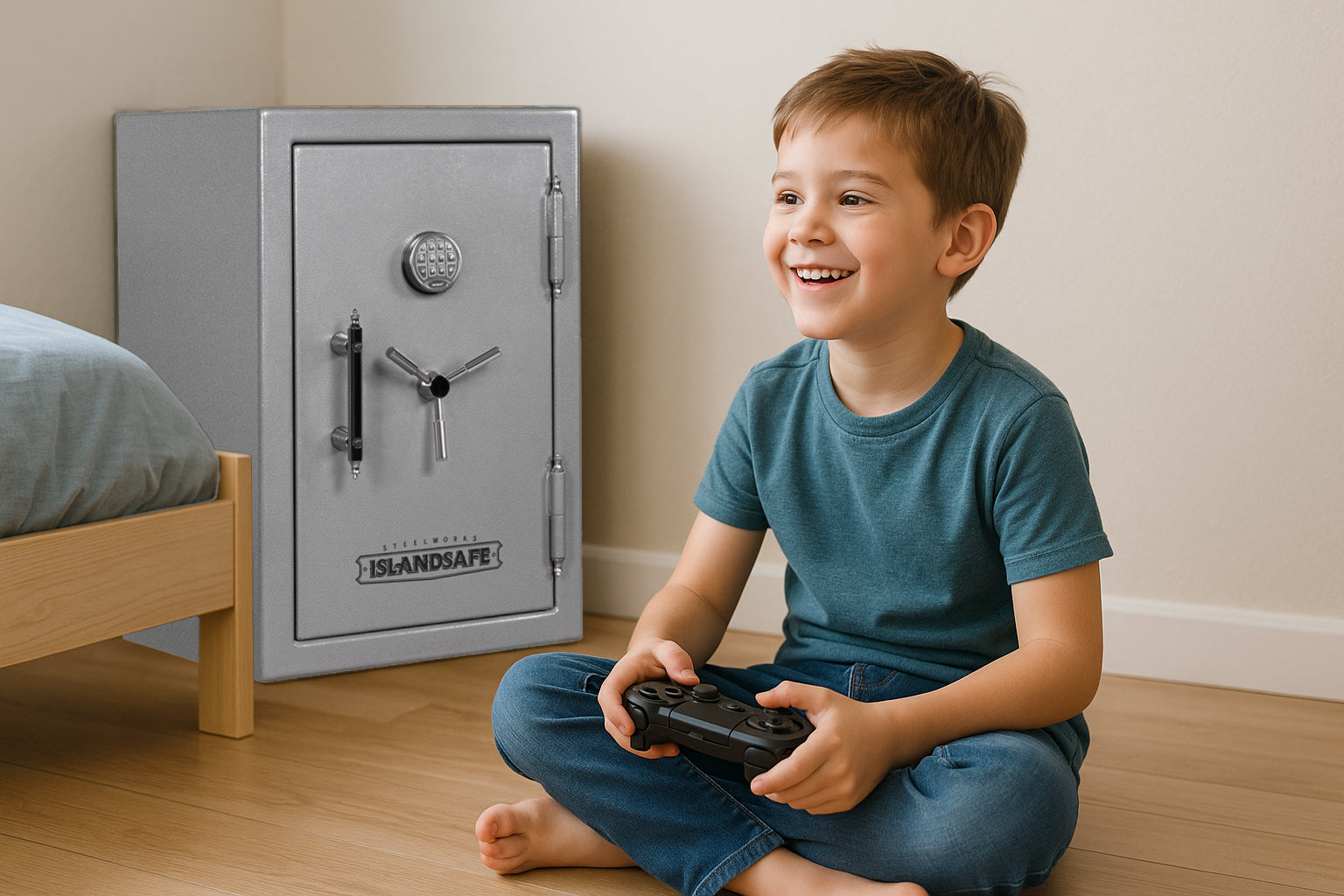
Home Alone: What Kids Should Know (and Not Know) About the Family Safe
Leaving a child home alone for the first time comes with plenty of conversations. Don’t open the door for strangers. Don’t tell anyone you’re home alone. Know where to find emergency contacts. But there’s one topic many parents overlook: the home safe.

Whether you use it to store important documents, spare keys, emergency cash, or medications, your high-security safe should be part of your family’s safety plan. But not everything inside it is meant for young kids — and how much they should know depends on their age and maturity.
What Younger Kids Should Know:
-
Where to find help or contact numbers if needed
-
That the safe is not a toy or hiding spot
-
Who is allowed to open it (and who isn’t)
-
What to do if they can’t reach you and need something from it
What They Don’t Need to Know:
-
The passcode or biometric safe setup
-
The contents of the safe (especially if valuables are involved)
-
How to find the override key
-
Any methods of bypass or emergency entry unless pre-approved
For Older Kids or Teens:
If your child is more independent, consider giving limited access to certain essentials. A small home safe can store allergy documents, medical cards, or daily-use items.
The Moderno Versatile Home Safe (XN25) is a great choice for kids learning to take responsibility for their belongings. Its compact size fits easily in a bedroom, closet, or desk cabinet, and the digital keypad makes access both easy and secure. With a removable shelf and triple-access options—including emergency keys and a backup battery port—it’s designed to be both user-friendly and reliable. The built-in alarm adds extra security, while the safe’s durable steel build keeps items like cash, jewelry, or important keepsakes protected. It’s also a perfect way to help children start saving money and storing special items from a young age.
At ISLANDSAFE, we believe that introducing safes to kids and teens is more than just a smart security upgrade — it’s an important life lesson. Just like teaching how to use locks, alarms, or emergency numbers, helping your child understand the value of a home safe builds habits around responsibility, organization, and protection. A safe isn’t just a container; it’s a key part of your family’s overall safety plan. By giving young people a secure place of their own, you’re not only protecting their belongings — you’re empowering them to take ownership of their space and their safety.







